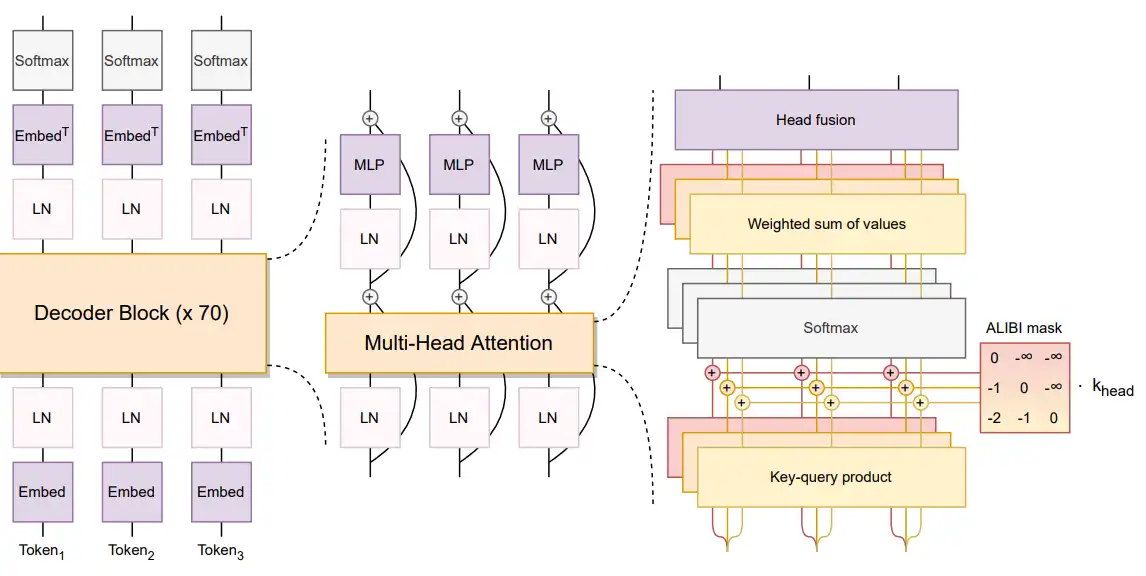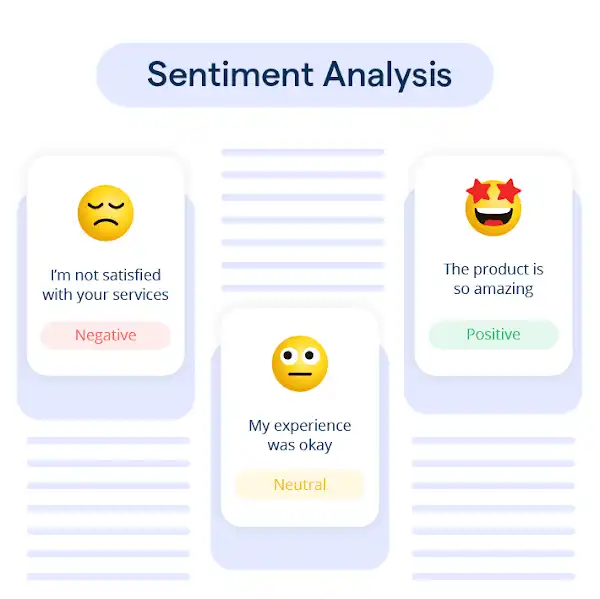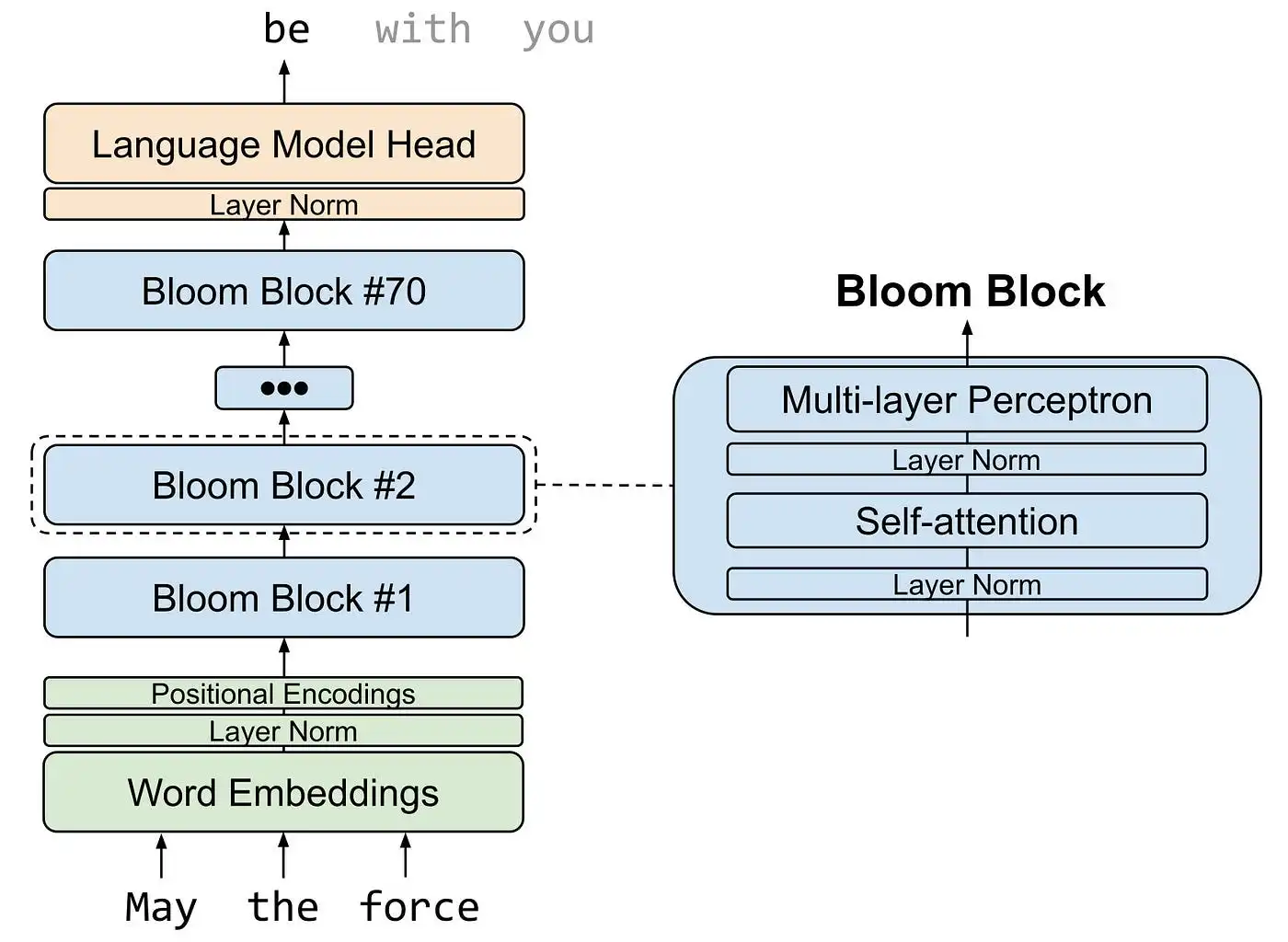Introduction
In the new era of language models, Bloom has gained significant attention for its design and impressive performance.
According to a recent report, the global natural language processing market is expected to reach $49.6 billion by 2030, growing at an annual rate of 16.3% from 2022 to 2030 (Source: Grand View Research).
Bloom, with its ability to handle complex language tasks accurately and efficiently, is set to play a crucial role in driving this growth.
In an evaluation conducted by AI Research Hub, Bloom outperformed several leading language models, including GPT-3, in various benchmark tasks. Thus establishing itself as a frontrunner in the field of natural language processing (Source: AI Research Hub, 2023).
Whether you're a developer, researcher, or someone interested in exploring Bloom's capabilities, this ultimate guide will provide you with a comprehensive overview. It also gives practical insights to help you get started with this revolutionary language model.
What is Bloom LLM?

Bloom LLM is a language model designed to understand and generate natural language text.
Leveraging advanced machine learning techniques, it processes input text to generate coherent responses, mimic human conversation, and perform various language-related tasks.
Bloom aims to comprehend context, syntax, and semantics to produce contextually relevant outputs. Thus making it useful for tasks like chatbots, content generation, and language understanding.
With continuous training and refinement, Bloom endeavors to improve its capabilities, enhancing its effectiveness in diverse applications ranging from customer service automation to creative writing assistance.
Advantages of Using Bloom LLM Compared to Other Options
When it comes to AI tools, there are many options available. However, Bloom LLM stands out for several reasons.
- Its open-source nature gives you the freedom to modify and extend its functionality according to your needs. This flexibility can be invaluable for researchers who want to experiment with new algorithms or developers who want to integrate AI into their applications.
- Bloom LLM's user-friendly interface makes it accessible to users of all skill levels. Whether you're a beginner or an experienced data scientist, you can easily navigate through the tool and start building models without extensive coding knowledge.
This makes Bloom LLM a great choice for those who want to quickly start experimenting with AI.
- Being open-source, it has a dedicated community of developers and researchers who actively contribute to its development and provide support to users.
This means that if you encounter any issues or have questions, you can rely on the community to help you out.
Setting Up Your Bloom LLM Environment
Before setting up your Bloom LLM environment, you need to consider whether you want to go with a cloud-based or local deployment.
Cloud-based deployment offers the advantage of scalability and convenience.
You can access your Bloom LLM instance from anywhere and utilize cloud resources to handle large datasets.
On the other hand, local deployment gives you full control over your environment and allows you to work offline without relying on an internet connection.
Installation and Configuration Steps for Each Approach
For cloud-based deployment, you can choose from popular cloud platforms like AWS, Google Cloud, or Microsoft Azure.
Each platform provides detailed documentation on how to set up a virtual machine instance and install Bloom LLM on it. These guides will walk you through the required configurations and help you get started quickly.
For local deployment, you can install Bloom LLM on your own hardware. The installation process is straightforward and well-documented.
You'll need to download the appropriate package for your operating system, follow the installation instructions, and set up any dependencies. Once installed, you can configure Bloom LLM to suit your preferences and start building your AI models right away.
Essential Hardware and Software Requirements
To ensure smooth performance, it's important to meet the hardware and software requirements for Bloom LLM.
The exact specifications may vary depending on your specific use case, but here are some general guidelines:
- Hardware: A modern processor with multiple cores, ample RAM (at least 8GB), and sufficient storage capacity for your datasets and models.
- Software: A compatible operating system (Windows, macOS, or Linux) and the necessary dependencies specified in the Bloom LLM documentation.
It's recommended to have the latest version of Python installed on your system as well.
By meeting these requirements, you can create an optimal environment for Bloom LLM and make the most of its capabilities.
Exploring Bloom LLM's Functionality

The key strengths of Bloom LLM are as follows:
- It can generate text, translate languages, and even complete code for you. Imagine having an AI assistant that can write paragraphs, translate phrases, or provide code suggestions. Bloom LLM makes these tasks easier and more efficient.
- With text generation, you can provide a prompt or a starting point, and Bloom LLM will generate text based on that input. It can be useful for creative writing, content generation, or even brainstorming ideas.
- Bloom LLM's language translation capabilities allow you to easily convert text from one language to another. It can be a valuable tool for communication and breaking down language barriers.
- Another impressive feature of Bloom LLM is its code completion ability. If you're a developer, you'll appreciate how Bloom LLM can assist you in coding tasks. It can suggest code snippets, provide autocomplete suggestions, and even help you understand complex programming concepts.
Advanced Features of Bloom LLM
In addition to its core functionalities, Bloom LLM offers advanced features that can be incredibly valuable in various applications.
Question Answering

One such feature is question answering. You can ask Bloom LLM questions, and it will provide relevant and informative answers based on the data it has learned from.
This can be beneficial for research, gathering information, or simply satisfying your curiosity.
Summarization
Summarization is another impressive capability of Bloom LLM. It can take a lengthy text and condense it into a shorter summary, capturing the main points and key ideas.
This can save you time and effort when you need to quickly grasp the essence of a document or article.
Sentiment Analysis

Bloom LLM's sentiment analysis feature is particularly useful in understanding the emotional tone of a piece of text.
It can analyze the sentiment and provide insights into whether the text is positive, negative, or neutral. This can be valuable for businesses seeking to understand customer sentiment, researchers studying public opinion, or social media analysis.
Crafting Effective Prompts for Bloom LLM

When using Bloom LLM, the prompts you provide play a crucial role in the quality and relevance of the AI's responses.
Prompts serve as instructions or guidelines for Bloom LLM to understand what you're asking or expecting. By crafting effective prompts, you can guide Bloom LLM to generate more accurate and useful outputs.
Techniques for Writing
To write effective prompts, it's important to follow some guidelines. First, be clear and concise in your instructions.
State your requirements or question in a simple and straightforward manner. Avoid ambiguity or vague language that may confuse Bloom LLM.
Second, provide relevant context. Briefly explain the background or context of your request so that Bloom LLM can understand the context and generate more accurate responses.
Third, consider the desired output format. If you're looking for a specific type of response (such as a short summary or a translation), make that clear in your prompt. This helps Bloom LLM tailor its response to your needs.
Examples of Effective Prompts for Different Use Cases
To illustrate effective prompts, here are a few examples:
- For text generation: "Please write a creative story about a magical forest."
- For translation: "Translate the following English phrase into French: 'Hello, how are you?'"
- For code completion: "Suggest code for creating a directory in Python."
Remember, the more specific and clear your prompts are, the better Bloom LLM can understand and generate the desired output.
Integrating Bloom LLM into Your Projects
Integrating Bloom LLM into your projects opens up a world of possibilities.
There are several methods you can use to seamlessly incorporate Bloom LLM's capabilities into your applications or workflows.
One way to integrate Bloom LLM is through an API (Application Programming Interface). OpenAI provides an API that allows you to send requests to Bloom LLM and receive responses programmatically.
This enables you to incorporate Bloom LLM's functionality directly into your software or web applications.
Another method is through libraries or SDKs (Software Development Kits) that provide pre-built functions and utilities for interacting with Bloom LLM. These libraries abstract away the complexities of API communication, making it easier for developers to use Bloom LLM's features in their projects.
Suggested Reading:
Exploring the Top 10 Use Cases of Bloom Large Language Model
Examples of Integrating Bloom
Let's explore a few examples of integrating Bloom LLM into different applications:
- Text Generation: You can integrate Bloom LLM into content creation tools to generate engaging blog posts, articles, or social media captions. By providing a prompt or topic, Bloom LLM can generate creative and informative text for your desired purpose.
- Chatbot Development: Bloom LLM can be a valuable component in chatbot development. By leveraging Bloom LLM's question answering capabilities, you can create chatbots that have a deeper understanding of user inquiries and provide more accurate responses.
- Data Analysis: Bloom LLM's summarization and sentiment analysis features make it useful for data analysis tasks. You can integrate Bloom LLM into your data analysis pipelines to automatically summarize large text datasets or analyze sentiment across customer reviews or social media posts.
Incorporating Bloom LLM into these applications can enhance their capabilities and provide more interactive, intelligent, and efficient experiences for user.
If you want to begin with chatbots but have no clue about how to use language models to train your chatbot, then check out the NO-CODE chatbot platform, named BotPenguin.
With all the heavy work of chatbot development already done for you, BotPenguin allows users to integrate some of the prominent language models like GPT 4, Google PaLM and Anthropic Claude to create AI-powered chatbots for platforms like:
- WhatsApp Chatbot
- Facebook Chatbot
- Wordpress Chatbot
- Telegram Chatbot
- Website Chatbot
- Squarespace Chatbot
- Woocommerce Chatbot
- Instagram Chatbot
Responsible Use of Bloom LLM: Ethical Considerations
When using Bloom LLM, it's important to be aware of potential biases and limitations. Just like humans, AI systems can also have biases.
These biases can stem from the data used to train the model, which may reflect societal biases. It's crucial to be mindful of these biases and strive to address them.
Additionally, Bloom LLM may have limitations. It's good to remember that it can perform exceptionally well in some areas, but it can't do everything perfectly. It's not a magical solution that can answer all questions.
Understanding and acknowledging these limitations is key to using Bloom LLM responsibly.
Implementing Responsible Practices to Mitigate Risks and Promote Ethical Usage
To ensure the responsible use of Bloom LLM, there are a few practices you can adopt.
Firstly, it's important to use the tool as a complement to human decision-making, rather than relying solely on its outputs. Humans should retain accountability for decisions made with the assistance of Bloom LLM.
You should also consider establishing checks and balances. It's a good idea to have multiple people review and validate the information provided by Bloom LLM, to minimize the risk of mistakes or biases going unnoticed.
Transparency is another crucial aspect. When using Bloom LLM, be transparent about its limitations and potential biases. Communicate these to stakeholders involved in the decision-making process. Honesty and openness go a long way in ensuring responsible usage.
Exploring Community Resources and Guidelines for Ethical AI Development
To navigate the ethical considerations of using Bloom LLM, it's beneficial to tap into community resources and guidelines.
The Bloom LLM community can provide valuable insights and best practices for ethical AI development.
By engaging with the Bloom LLM community, you can learn from others' experiences and exchange ideas. Look for forums, discussion boards, or online communities dedicated to Bloom LLM and AI ethics.
These resources can provide guidance on various ethical aspects, such as bias mitigation and responsible decision-making.
Conclusion
Bloom stands as a shining example of the incredible potential that large language models hold.
By mastering the intricacies of this revolutionary LLM, developers and researchers alike can unlock a world of possibilities, driving innovation and shaping the future of language technology.
According to a recent study by NLP Insights, a leading research firm, organizations that have successfully integrated Bloom into their NLP workflows have reported a 25% increase in overall efficiency and accuracy compared to those using traditional models (Source: NLP Insights, "Bloom Integration: Boosting NLP Performance," 2023).
As the demand for advanced language AI solutions continues to soar across industries, Bloom's impact is poised to be transformative.
With its continuous development and refinement, Bloom is expected to pave the way for a future where language barriers are transcended, and human-machine communication reaches unprecedented heights.
Frequently Asked Questions (FAQs)
What are the admission requirements for the Bloom LLM program?
Bloom LLM requires applicants to have a law degree or equivalent, submit transcripts, letters of recommendation, a personal statement, and a resume or CV.
How long is the Bloom LLM program, and what is the course structure like?
The Bloom LLM program is typically one year long, with a mix of core and elective courses, culminating in a research project or thesis. The course delivery format varies by university and program.
Can I pursue a Bloom LLM while working full-time?
Many Bloom LLM programs offer flexible scheduling, including part-time and online options, allowing working professionals to balance their work and academic responsibilities.
Are there opportunities to specialize in a particular area of law in the Bloom LLM program?
Yes, Bloom LLM programs offer a range of specializations, including international law, business law, intellectual property law, human rights law, and environmental law, among others.
How can Bloom LLM enhance my legal career prospects?
Bloom LLM provides a valuable opportunity to gain specialized knowledge and expertise, enhancing your opportunities for advanced career prospects in law firms, corporations, international organizations, governmental agencies, or academia.


